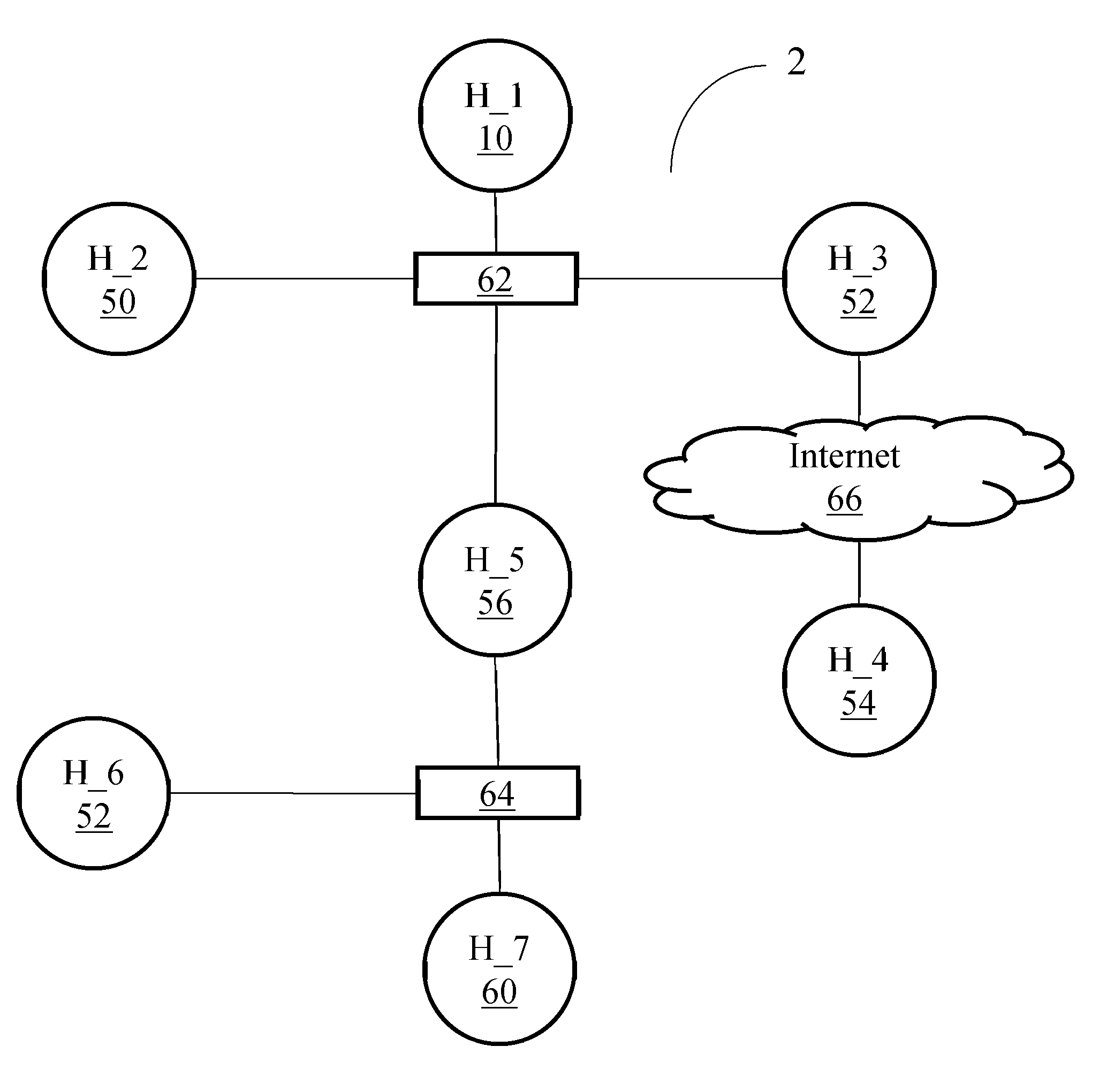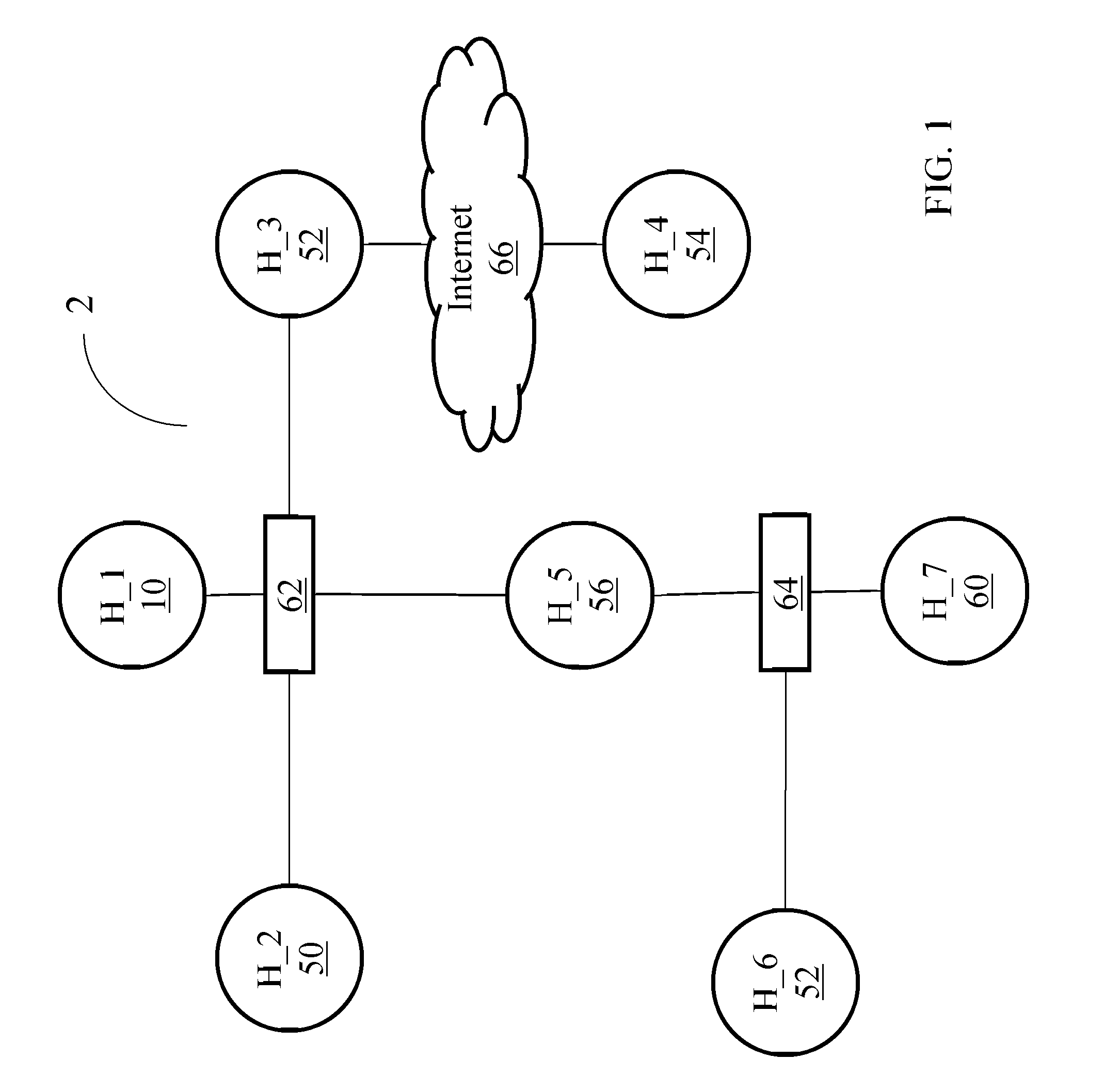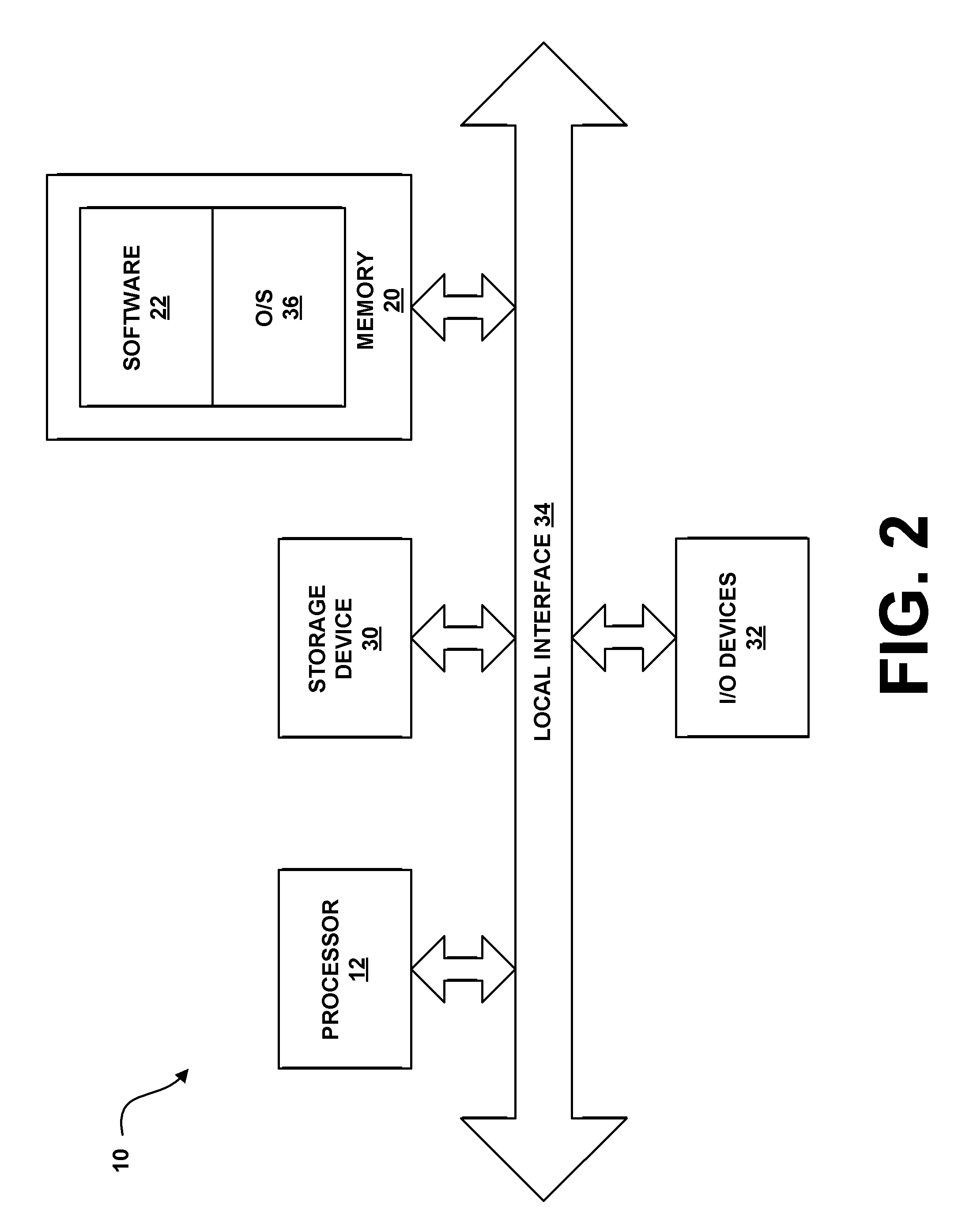System and method for probabilistic attack planning
a probabilistic attack and planning technology, applied in the field of computer and network security, can solve the problems of reducing the number of possibilities, and reducing the number of possible outcomes
- Summary
- Abstract
- Description
- Claims
- Application Information
AI Technical Summary
Benefits of technology
Problems solved by technology
Method used
Image
Examples
Embodiment Construction
to their coefficient, the exemplary process inspects the requirements that still are not satisfied for each of the actions.
[0044]FIG. 21 is a schematic diagram illustrating that Host H_1 checks if the requirements for the actions are satisfied and in the case that they are not, the Host H_1 searches the actions that as an output can ensure whether each requirement is satisfied by the target host.
[0045]FIG. 22 is a schematic diagram further illustrating how actions are combined, ordering the execution and calculating the compound probabilities and expected run time.
[0046]FIG. 23 is a schematic diagram illustrating that once the sequence of actions that complete the requirements for each action is built, the joint probability and expected run time is calculated, now including the first-level actions (here exploits).
[0047]FIG. 24 is a schematic diagram further illustrating the procedure associated with FIG. 23.
[0048]FIG. 25 is a schematic diagram illustrating, in accordance with the ex...
PUM
 Login to View More
Login to View More Abstract
Description
Claims
Application Information
 Login to View More
Login to View More - R&D
- Intellectual Property
- Life Sciences
- Materials
- Tech Scout
- Unparalleled Data Quality
- Higher Quality Content
- 60% Fewer Hallucinations
Browse by: Latest US Patents, China's latest patents, Technical Efficacy Thesaurus, Application Domain, Technology Topic, Popular Technical Reports.
© 2025 PatSnap. All rights reserved.Legal|Privacy policy|Modern Slavery Act Transparency Statement|Sitemap|About US| Contact US: help@patsnap.com



